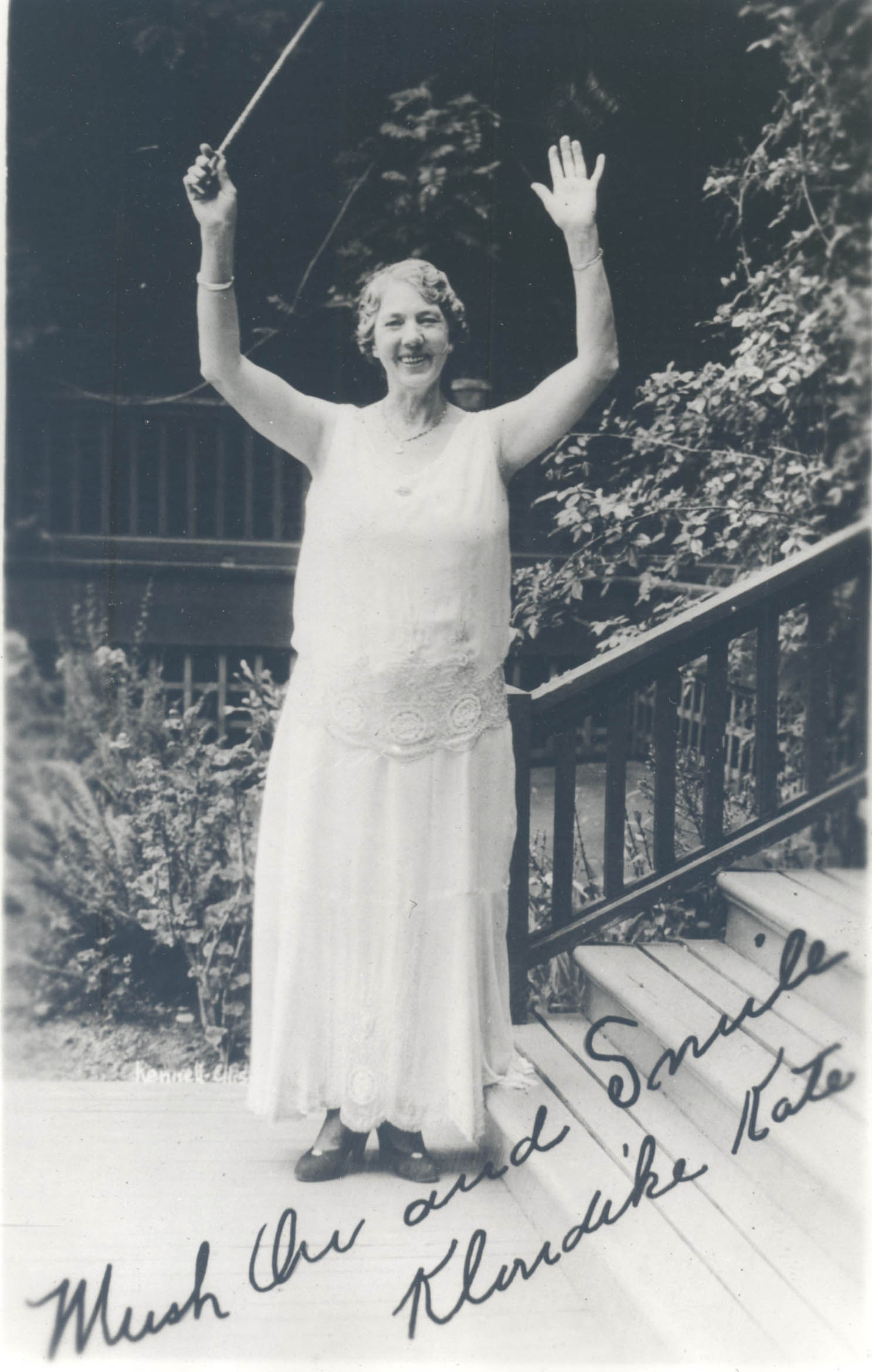Kathleen Eloisa "Kitty" Rockwell—also known as Klondike Kate, the Belle of the Yukon—was a vaudeville singer and dancer who made her name and fortune on the saloon stages of Dawson, in the Yukon, Canada, during the Klondike Gold Rush. Rockwell later settled in central Oregon, residing for many years in Bend before living out her final years in Sweet Home.
Rockwell was born in Junction City, Kansas, in 1876. After her parents divorced, when Kate was five, she accompanied her mother Martha first to Spokane, Washington, and then to Valparaiso, Chile. At age eighteen, Rockwell returned to America, where she lived in New York City and took the first of many jobs as a chorus girl, making her debut appearance in a Coney Island bar before performing in vaudeville houses in New York. She then followed a job offer with a variety theater back to Spokane. While living on dances and drink tips, Rockwell heard the first rumors of the Klondike Gold Rush. She and a friend quickly left Spokane, bound for the Yukon.
After several stops along the way, Rockwell arrived in Dawson in 1900, where she joined the Savoy Theatrical Company. She soon caught the eye of a local promoter and was offered a high-paying gig dancing at the Palace Grande Theatre. It was there that she developed her trademark "Flame Dance," a racy number in which she wore a red sequinned dress trailing 200 feet of chiffon that she twisted and turned into an illusion of flames. The act launched her into Klondike stardom. Rockwell made a fortune from the newly rich miners, sometimes earning more than $750 a night.
Before long, Rockwell fell in love with Alexander Pantages, a young Greek American who borrowed significant sums of money from her to launch his career as a theater manager. She followed Pantages back to Washington, where he abruptly abandoned her and married a Seattle violinist.
Pantages had put a considerable dent in Rockwell's fortune, so she took her vaudeville show on tour, performing in saloons and theaters up and down the West Coast. Touring took a toll on her, however, and after an emotional collapse she retired from the stage. Nearly broke and in need of a new career, she traded her house in Seattle for a homestead claim of 320 acres near Brothers, Oregon, in the sagebrush plains between Bend and Burns.
Rockwell stayed at her claim for the requisite seven years, making improvements to the land and outbuildings. In 1917, she sold the land and moved to Bend, forty miles to the northwest. She built a lodging house at 231 Franklin Street (since demolished), which was a landmark in the town for many years.
Rockwell enjoyed the life of a local celebrity, supporting a variety of charitable causes but focusing much of her attention on the volunteer fire department. She acquired the affectionate nickname "Aunt Kate," but rumors of her colorful past and mysterious sources of income (some thought she was a bootlegger, others thought she supplied prostitutes for a local bawdy house) prevented respectable society from interacting with Rockwell.
In 1933, after a short-lived marriage to the cowboy Floyd Warner, Rockwell married Johnny Matson, a Yukon gold miner who split his time between Alaska and Oregon. The couple was happily married until Matson died in 1946, his body found frozen in a remote shack in Alaska.
Rockwell married again in 1948 to a longtime friend and Bend accountant Bill Van Duren. They retired to Sweet Home, where Rockwell died peacefully in her sleep in 1957.
-
![Klondike Kate, 1936]()
Klondike Kate, 1936.
Klondike Kate, 1936 Courtesy Oreg. Hist. Soc. Research Library, OrHi54520
Map This on the Oregon History WayFinder
The Oregon History Wayfinder is an interactive map that identifies significant places, people, and events in Oregon history.
Further Reading
Morgan, Lael. Good Time Girls of the Alaska-Yukon Gold Rush. Fairbanks, AK: Epicenter Press, 1998.
Lucia, Ellis. Klondike Kate: the Life and Legend of Kitty Rockwell, the Queen of the Yukon. New York: Hastings House, 1962.

